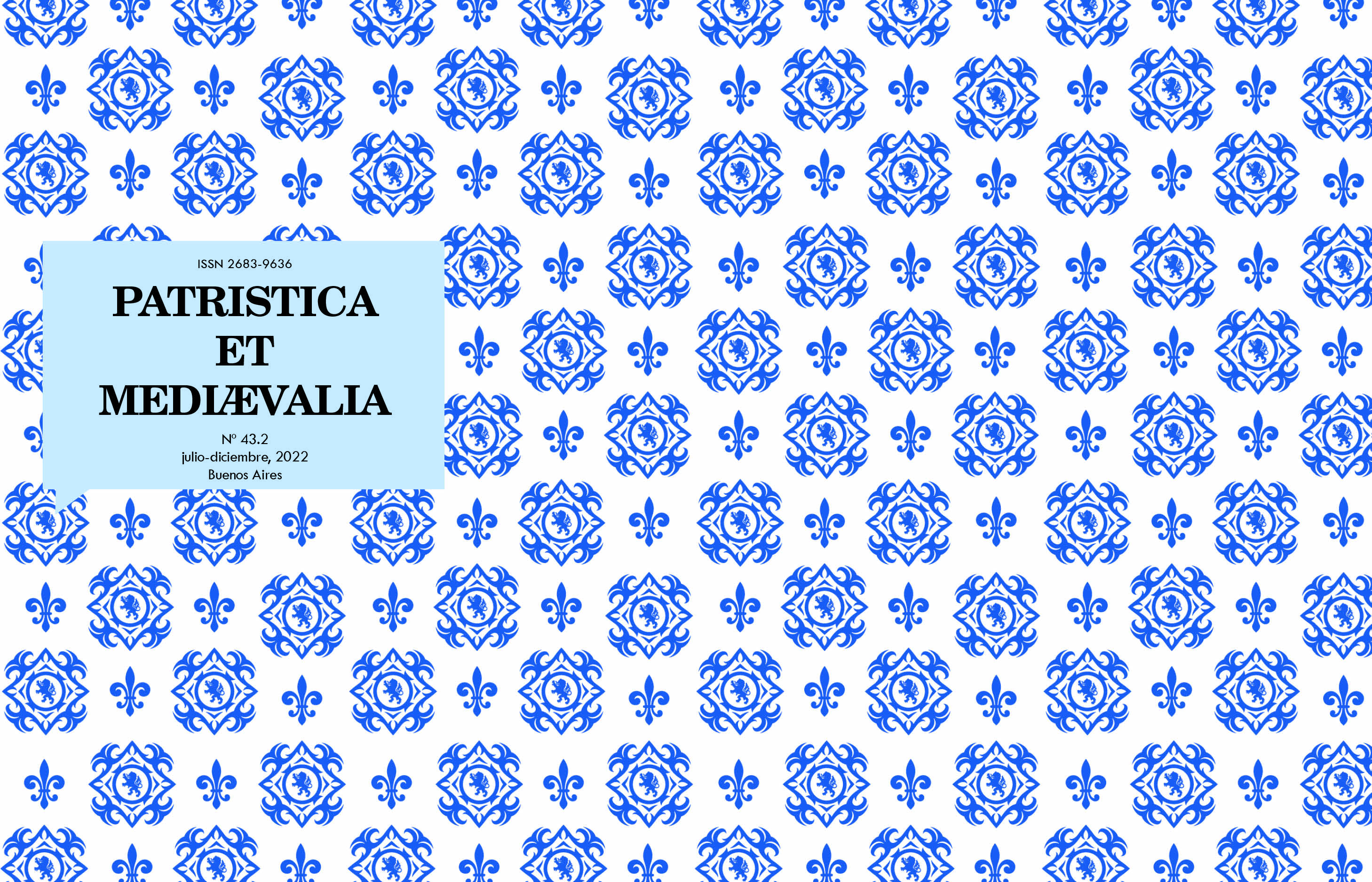Translatio ludorum. The Reception of Muslim Chess in the Reign of Alfonso X
Abstract
Chess has never been a mere board game but also a reflection of the philosophical, ideological and social tensions experienced by its players over many historical periods. Thus, when the Muslims received this game from the conquests of Persia, they modified it to be compatible with their society. With the expansion of Islam in the Iberian Peninsula, the game encountered the Latin and Spanish worlds. There, king Alfonso X inherited some of the philosophical issues regarding the game and used it as an allegory for the socio-political conflicts his own reign was going through.Downloads
References
Abū Muḥammad ‘Abd al-Wāhid al- Marrākušī (1955). Kitab al-Mu ’yib fi Taljis Ajbar al- Magrib [Lo admirable en el resumen de las noticias del magrib]. Trad. Huici Miranda, A. En: Idem. Colección de crónicas árabes de la reconquista. Vol. 4. Instituto General Franco de Estudios e Investigación hispano-árabe: Editora Marroquí Tetuán.
Al-Masudi (1874). Les prairies d’or. Ed. y trad. Barbier de Meynard, C. París: Société Asiatique. (Collection d’ouvrages orientaux 8).
Al-Masudi (1861). Les prairies d’or. Ed. y trad. Barbier de Meynard, C. y Pavet de Courteille. París: Société Asiatique. (Collection d’ouvrages orientaux 1).
Alexander Neckam (1863). De naturis rerum. Ed. Wright, Th. Londres: Longman Green, Longman, Roberts and Green.
Alfonso X el Sabio (1807). Las siete partidas. Tomo II. Madrid: Imprenta real.
Alfonso X el Sabio (2007). Libro de los juegos: acedrex, dados e tablas. Ordenamiento de las tafurerías. Ed. Orellana Calderón, R. Madrid: Fundación José Antonio de Castro.
Anónimo (1935). Libro del ajedrez. De sus problemas y sutilezas. Trad. Pareja Casañas, F. M. Madrid: Estanislao Maestre.
Bernardo de Claraval (1983). Libro sobre las glorias de la nueva milicia. A los caballeros templarios. Trad. Aranguren, I. Madrid: BAC.
Jacobus de Cessolis (1879). De ludo scachorum. Ed. Kopke. Brandenburg: Matthes.
Petrus Alfonsi (1911). Disciplina Clericalis. Ed. Hilka, A. y Söderhjelm, W. Helsinki. (ASSF 38/4).
Petrus Damianus (1853). Apologeticus ob dimissum episcopatum. Ed. Migne, J.-P. París. (PL 145).
Pseudo-Ovidius (1967). De vetula. Ed. Klopsch, P. Leiden: Brill.
Tomás de Aquino (1994). Suma de teología IV. Parte II-II (b). Trad. Gómez Becerro, L. et al. Madrid: BAC.
Adams, J. (2006). Power Play: The Literature and Politics of Chess in the Late Middle Ages. Filadelfia: University of Pennsylvania Press.
Brunet y Bellet, J. (1891). El ajedrez. Investigaciones sobre su origen. Barcelona: Librería “L’Avenc” de Massó y Casas.
Borges, J. L. (1981). Obra poética 1923-1977. Buenos Aires: Emecé.
Calvo, R. (1985). “Un nuevo manuscrito de ajedrez del siglo XV”, Revista Jaque 15.173, 252-253.
Cazaux, J. y Knowlton, R. (2017). A World of Chess. Its development and variations through centuries and civilizations. Carolina del Norte: McFarland & Company.
Escourido, J. (2017). “Política alfonsí de la alegría: juegos de tablero, subjetivación y control social”, La corónica: A Journal of Medieval Hispanic Languages, Literatures, and Cultures 46.1, 73-94.
Garzón, J. A. (2001). En pos del incunable perdido. Valencia: Biblioteca valenciana.
González Alcantud, J. A. (1993). Tractatus ludorum. Una antropología del juego. Barcelona: Anthropos.
Guerrero, R. R. (1985). El pensamiento filosófico árabe. Madrid: Cincel.
Huizinga, J. (2007). Homo ludens. Trad. Imaz, E. Madrid: Alianza.
Martínez Sáez, N. (2021a). “La eutrapelia. Recepción en los primeros cristianos y en los Padres de la Iglesia”. En: Violante, S. B. (coord.). Las emociones en la Edad Media. Buenos Aires: Universidad Nacional de Mar del Plata, 20-32.
Martínez Sáez, N. (2021b). “Alfonso X el Sabio y los juegos en la Edad Media”, Hispano-American Journal TOR 2, 1-11.
Molina Molina, A. L. (2020). “Entrevista”, Revista de Filosofía y Ciencias Prometeica 21, 85-88.
Murray, H. J. R. (1913). A History of Chess. Londres: Oxford University Press.
Musser Golladay, S. (2007). Los libros de acedrex dados e tablas: Historical, Artistic and Metaphysical Dimensions of Alfonso X’s Book of Games. Arizona: The University of Arizona.
Parlett, D. (2018). History of Board Games. Vermont: Echo Point Book & Media.
Pastoureau, M. (2013). “La llegada del juego de ajedrez a Occidente”. En: Idem. Una historia simbólica de la Edad Media Occidental. Trad. Bucci, J. Buenos Aires: Katz, 297-320.
Steiner, G. (2009). “Muerte de reyes”. En: Idem. George Steiner en The New Yorker. México: Fondo de Cultura Económica, 357-369.
Shenk, D. (2006). La partida inmortal. Una historia del ajedrez. Trad. Martínez-Lage, M. y Pranger, C. Madrid: Turner.
Vázquez Campos, B. (2010-2011). “El Rey en jaque: Alfonso X y el ajedrez”, Cantigas y otras obras alfonsíes 7, 293-328.
Westerveld, G. (2008). La reina Isabel la Católica: su reflejo en la dama poderosa de Valencia, cuna del ajedrez moderno y origen del juego de damas. Murcia: Generalitat Valenciana, Conselleria de Cultura, Educació i Esport.
Wollesen, J. T. (1990). “Sub specie ludi…Text and Images in Alfonso El Sabio’s Libro de Acedrex, Dados e Tablas”, Zeitschrift für Kunstgeschichte 53, 277-308.
1. The authors who publish in this magazine accept the following conditions:
-
They retain the copyright and grant to the magazine the right of the first publication, with the work registered under the Attribution-ShareAlike 4.0 International License that allows third parties to use what is published as long as they mention the authorship of the work and the first publication in this magazine.
-
They can make other independent and additional contractual agreements for the non-exclusive distribution of the version of the article published in this magazine (eg. include it in an institutional repository or publish it in a book) provided that they clearly indicate that the work was first published in this journal.
-
They are allowed and recommended to publish their work on the Internet (for example on institutional or personal pages).
2. AutoArchive Conditions. Authors are allowed and encouraged to distribute post-print electronic versions of their manuscripts because it promotes their circulation, a possible increase of quotation and a major reach among the Academic community. Color RoMEO: blue.













